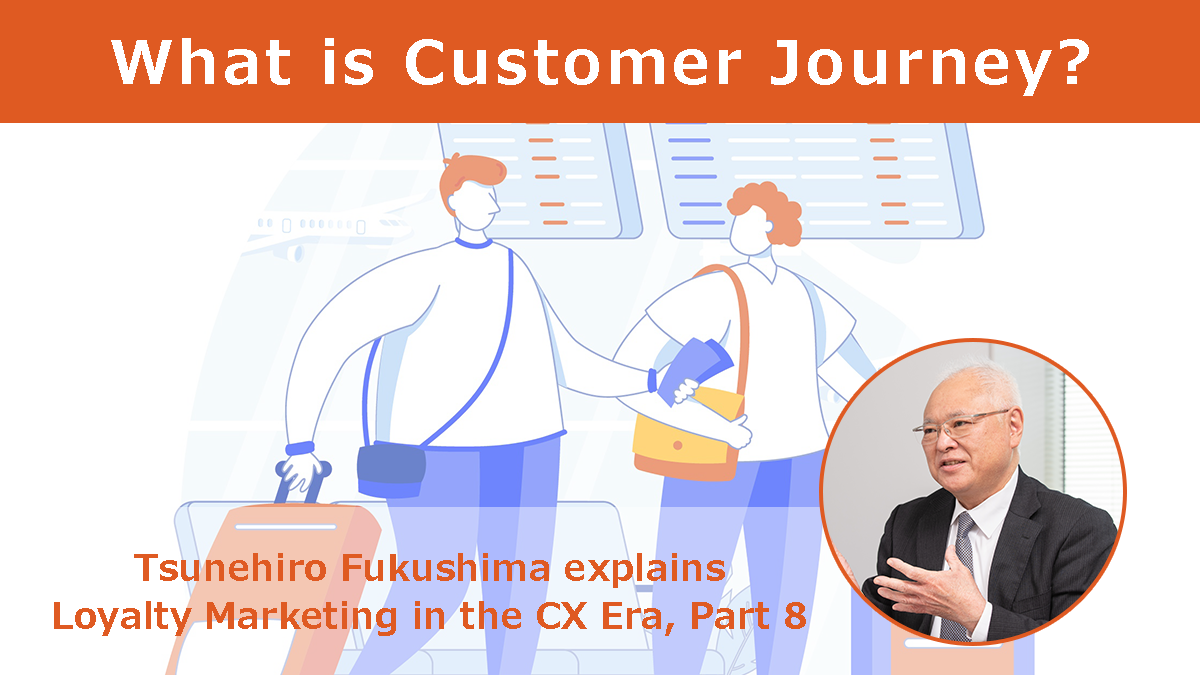The customer journey is the history of contact between a customer and a product, service, or brand. Customers have a variety of feelings and impressions about a single product, service, or brand, and not all of them are created immediately. It has been built up over a long period of time. Some of these include latent impressions and images that the customers themselves may not be aware of. The customer journey is the process of defining these elements and putting them into a single form. The most common is called the basic customer journey, which is now defined as the 5As.
Increasingly complex modern customer journey
The customer journey used to be called the information processing process of consumers. AIDA, an acronym that stands for Attention, Interest, Desire, and Action, is the customer’s information processing process itself. This has come to be known as consumer behavior, and more recently as the customer journey. We naturally call it the customer journey, but the term has changed with the changing times in the marketing world.
In the old days of marketing, the customer journey was considered very simple. A company communicates a one-way message to a customer through mass advertising. The customer then receives the message, likes the company, seeks out the product, and buys it. In this way, it has been talked about on the premise of a simple customer journey that is almost the same as the basic customer journey. There were not as many points of contact between customers and companies as there are today, and a simple and straightforward customer journey was sufficient. Companies could control information about their products, services, and brands easily.
However, with the advent of the Internet, the way this information flows has changed dramatically. For example, a company sends out information, but the customer who receives it may transmit it on a social networking service or post it on a word-of-mouth site. And another person who receives it may transmit it further to others. Another person may fall in love with the product and actually try to buy it. Others may search word-of-mouth sites to investigate the veracity of information. Others may like a product but not actually buy it at immediately, but keep it on their wish list on an e-commerce site.
With the advent of the Internet, customers are no longer the passive entities they once were. The contact points between customers and products, services, and brands have become more diverse and complex as customers are now able to actively transmit information. That has a profound impact on the customer journey, and it is impossible to properly understand the modern customer journey without considering the transmission and reception of customer information via digital media, such as social networking, blogs, and email, as a series of actions.
In retrospect, marketing in the old days was a lot easier. This is because the customer journey was simple. In comparison, today’s customer journey is becoming very diverse and complex. Through this customer journey, it is becoming increasingly important to optimize the awareness and feelings that customers have toward products, services, and brands, in other words, loyalty marketing.
Customer journey with customer personas
The basic customer journey today is the 5As, but since the customer journey is the path taken by the customer, there are many different types of customer journeys. It is crucial to use it for different purposes. For example, in the pharmaceutical industry, it is called the patient journey. That describes the path a customer takes from the time they become ill to the time they pass away.
One important thing to consider along with the customer journey is the customer persona. The concept of persona marketing is very closely related to the customer journey, and the customer journey itself is persona-dependent. In other words, each persona has a different customer journey.
For example, consider the customer journey when a customer selects a pen. The customer journey for a writing instrument enthusiast and a non-enthusiast, i.e., a person who simply needs to be able to write, is quite different. This is a good example to understand that different personas have very different customer journeys, but surprisingly, this point is often overlooked.
When discussing the customer journey, it is important to understand that the persona process is hidden behind the scenes. Since the basic customer journey is only a macro concept, it is expressed and discussed with the average in mind. However, when considering a strict customer journey, one must be aware of these differences. This is important advice from a practical point of view.
Tsunehiro Fukushima will direct your marketing efforts
At transcosmos, we offer marketing strategy proposals in line with the 5A concept advocated by Philip Kotler. For actual proposals, Tsunehiro Fukushima, the commentator of this article, supports loyalty marketing optimized for the digital age. First of all, please tell us your company’s concerns.
Tsunehiro Fukushima
Corporate Executive Officer, transcosmos inc.
Director, Japan Marketing Association
After completing graduate studies at the Tokyo Institute of Technology, he joined Ajinomoto Co., Inc. He then worked for GE Capital, Mitsubishi Corporation, Gurunavi, Inc., and Medical Data Vision Co., Ltd., where he served as head of big data business and marketing. His areas of expertise include new business and new produ
